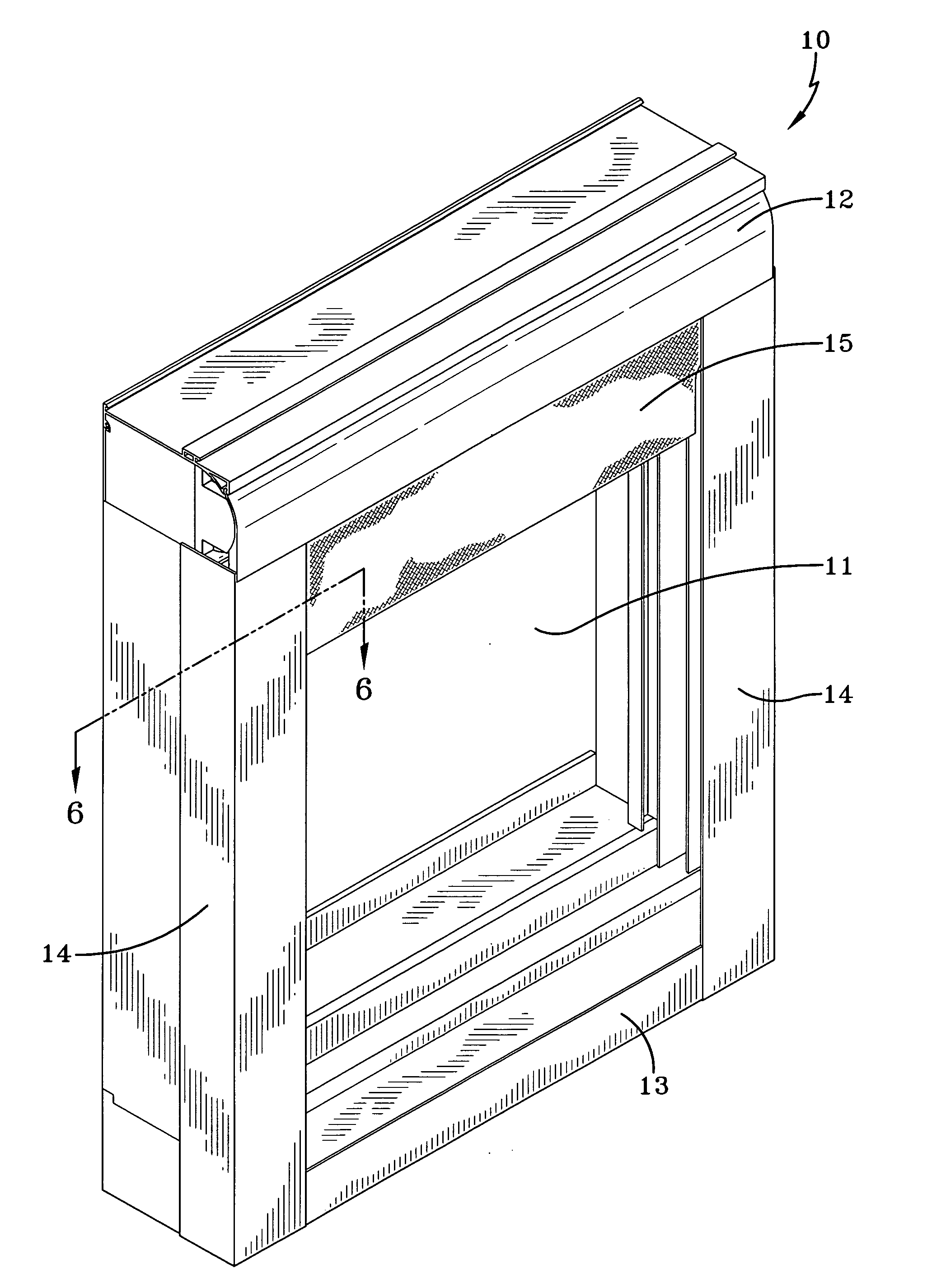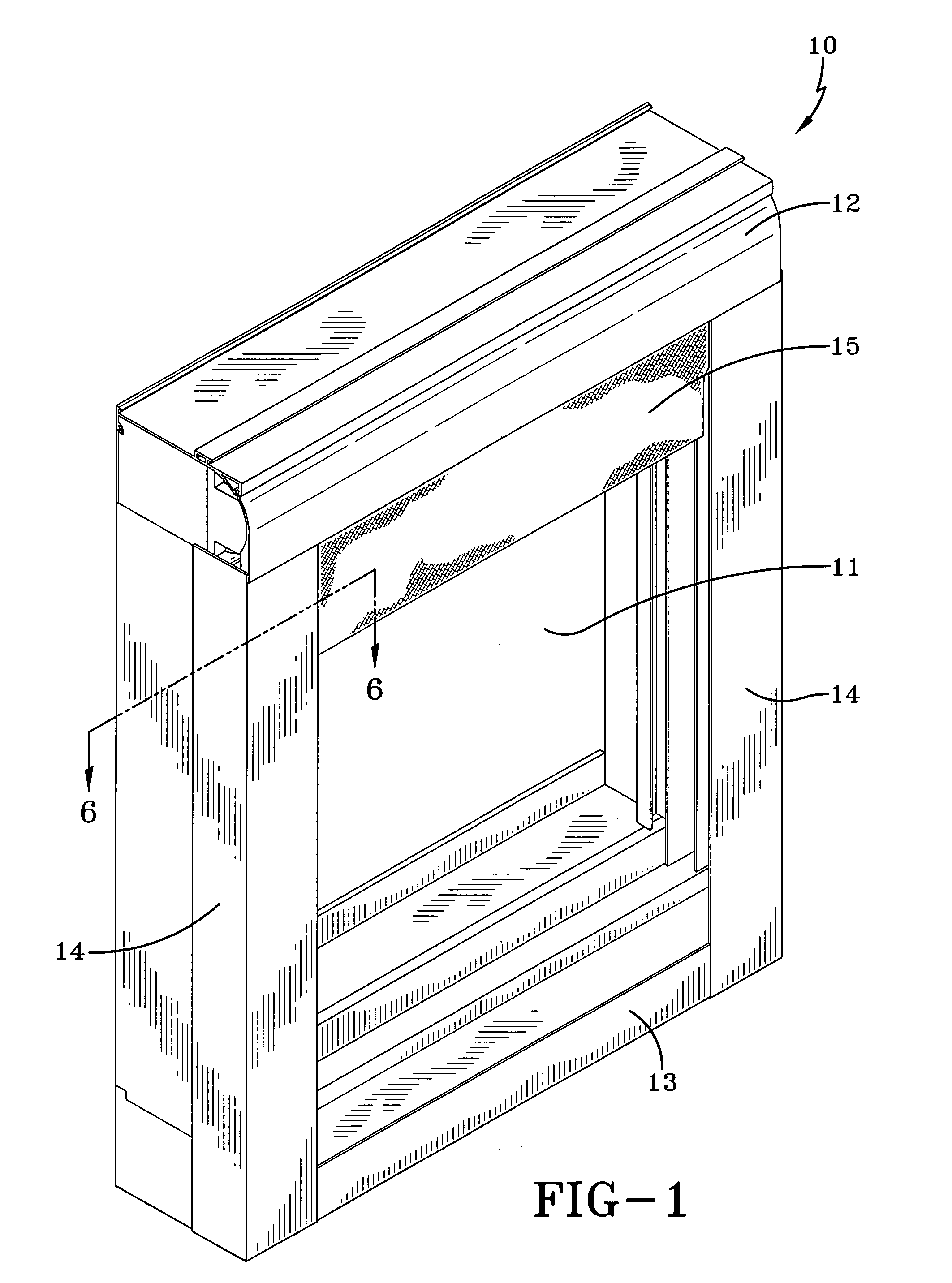Storm curtain side retention system
a curtain and side edge technology, applied in the field of curtain side retention system, can solve the problems of disfiguring the exterior of the structure, and affecting the appearance of the structur
- Summary
- Abstract
- Description
- Claims
- Application Information
AI Technical Summary
Benefits of technology
Problems solved by technology
Method used
Image
Examples
Embodiment Construction
[0025]A storm curtain assembly made in accordance with the present invention is indicated generally by the numeral 10 in FIG. 1 and is adapted to be used to cover an opening, such as a window 11 of a structure. Assembly 10 can be positioned on the outside of the structure or on the inside thereof and includes an upper header 12 which extends across the top of window 11 and a lower sill 13 which extends across the bottom of the window 11. Laterally spaced side rails 14 extend vertically between the lateral edges of header 12 and sill 13.
[0026]As shown in FIG. 4, a curtain 15 has an upper end 16 longitudinally spaced from a lower end 17 and has opposed laterally spaced side edges 18. Curtain 15 can be made of any suitable material having a strength to protect opening and is preferably formed of a fabric material as disclosed in U.S. patent application Ser. No. 11 / 190,114 to which reference is made for whatever details may be necessary to fully understand the present invention. The upp...
PUM
 Login to View More
Login to View More Abstract
Description
Claims
Application Information
 Login to View More
Login to View More - Generate Ideas
- Intellectual Property
- Life Sciences
- Materials
- Tech Scout
- Unparalleled Data Quality
- Higher Quality Content
- 60% Fewer Hallucinations
Browse by: Latest US Patents, China's latest patents, Technical Efficacy Thesaurus, Application Domain, Technology Topic, Popular Technical Reports.
© 2025 PatSnap. All rights reserved.Legal|Privacy policy|Modern Slavery Act Transparency Statement|Sitemap|About US| Contact US: help@patsnap.com



